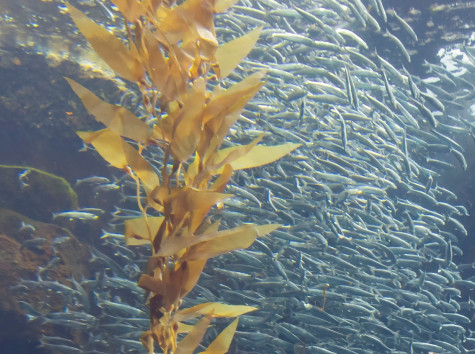Ships traverse the world's oceans, carrying not just goods and people but also unseen invaders. Ballast water, used to stabilize vessels during transit, is a major pathway for the introduction of invasive aquatic species.
These organisms, ranging from bacteria to invertebrates, can have devastating effects on marine ecosystems, outcompeting native species, altering food webs, and leading to biodiversity loss.
The threat posed by ballast water is a global concern, with impacts felt in ports and coastal waters worldwide. Invasive species can disrupt local fisheries, degrade habitats, and introduce diseases, causing significant ecological and economic damage. The challenge of managing ballast water is complex, requiring international cooperation and innovative solutions.
Despite being essential for stabilizing vessels at sea, ships’ ballast water is one of the main causes of transfer of invasive aquatic species -such as bacteria, microbes, small invertebrates, eggs, cysts and larvae of various species- from the world’s one region to the other. The issue is globally recognized as one of the greatest threats to the ecological and economic well-being of the planet for causing enormous damage.
The transferred species may survive to establish a reproductive population in the host environment, becoming invasive, out-competing native species and multiplying into pest proportions. International Maritime Organization (IMO) data show that the rate of bio-invasions is continuing to increase at an alarming rate and new areas are being invaded all the time. On the economic front, the impact of invasive species is also considerable. In Canada alone, it is estimated that invasive species cause around $6 billion in disruption and damages every year, according to Clear Seas.
Regulatory frameworks, such as the International Maritime Organization's Ballast Water Management Convention, aim to minimize the transfer of invasive species by requiring ships to treat their ballast water. The offshore renewables sector can contribute by advocating for strict enforcement of these regulations and investing in research to improve ballast water treatment technologies.
Cognizant can help enhance environmental stewardship efforts by leveraging data to track and predict ballast water pollution. This initiative involves collecting data from various sources such as satellites and sensors to integrate different data types from multiple sources into a dedicated cloud platform to create interactive dashboards that provide real-time insights into the degree of pollution across different geographic areas, routes, and timeframes specifically tailored to shipping logistics. Additionally, employing advanced artificial intelligence and machine learning techniques will enable us to predict potential pollution hotspots and conduct trend analysis for proactive mitigation measures.
Our team is equipped to build ML algorithms that can analyze data from onboard sensors that monitor the quality of ballast water, identifying potential biological contaminants in real-time. This allows for immediate treatment actions before discharging ballast water at ports, and aids in detecting non-native species before they are released into new environments.
We have integration capabilities that can integrate multiple data sources, including environmental conditions, shipping patterns, and known distributions of invasive species, to create comprehensive risk assessment models. These models can forecast potential invasions and inform management strategies at both the ship and regulatory levels.
Cognizant Ocean has expertise in gathering data from a variety of sources, including onboard sensors for water quality, satellite data for environmental conditions, and databases for known distributions of marine species. In addition, we help clean the data, standardize, and analyze. Our AI algorithms can process sensor data to monitor ballast water quality, while ML models trained on marine species databases can classify organisms found in ballast water samples.
Collaboration is key to addressing the challenge of ballast water and preserving marine biodiversity. By working together, the maritime and offshore renewables industries, along with governments and environmental organizations, can protect our oceans from the threat of invasive species.
Learn how our innovative technologies are helping manage ballast water to prevent the spread of invasive species. Contact Ocean@cognizant.com to discover how you can join the effort to preserve marine biodiversity and ensure the health of global marine ecosystems.













